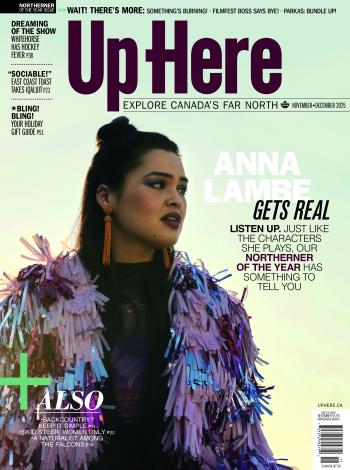From behind the airport fence, Inuit teenagers watch our engines stop at Arviat, 260 kilometers north of Churchill. First officer Sarah Mousseau clicks open the door and exhaust fumes fill the cabin. The double-wheel tire tracks in the dusty gravel mark my return North of 60 after decades working in African nations like central Algeria, coastal Congo, Madagascar, and Namibia. As a former expatriate professional pilot hired by humanitarian organizations, mining companies and oil corporations, I welcomed a return to my roots in tundra terrain. Here, I don’t have to be on alert for Saharan spiders nesting in shoes at night or sneaky scorpions. There are other critters to worry about.
Yellowknife’s Buffalo Airways needed a pilot for its sleek Beechcraft King Air A100 and despatched me on multi-day odyssey with a crew to inspect metal towers in Nunavut communities. Mousseau would guide me through the transformations that had taken place during my sojourns abroad. After years of dodging jungle storms and desert sandstorms to deliver sweat-soaked Moroccans to oil rigs or hauling mouldy granola bars to starving Sudanese refugees, I expected change.
Our task begins with a stop in Churchill, Man. where we load clients, luggage, and tools alongside the donuts carefully sniffed, squeezed, and selected by Mousseau during her patrols of coffee shops wherever we land. In resplendent green flight suits adorned with the Buffalo Airways logo, we track beyond the treeline to Arviat.
In the good old days of the 1960s, my first encounter with the treeless barren ground and the view of Eskimo Point, as it was known, occurred from a small Cessna 180 ski plane. After touchdown on ice slimed by seeping honey bags, we heard nothing except a few snarling dogs. The quiet seemed to wrap around us before the first Inuit I had ever met trudged into sight. They spoke no English but their welcome put us all at ease.
Back then, we hand-pumped gasoline into the wing tanks before passing the night on a slivered warehouse floor. Semi-frozen sandwiches served as dinner and an overfilled plastic pail stood by for hygienic purposes. Today, modern Arviat’s screaming snow machines and reverberating quads rattle our King Air. Instead of hardwood planks, the Arviat Inn provides food and accommodation, which thankfully includes flush toilets. As for Mousseau, she scampers towards a Tim Hortons to forage for more donuts. The next morning, we see no abandoned fuel drums or cracked plastic hoses. A refuelling truck tops the King Air’s tanks while we watch.
En route to Rankin Inlet, we enjoy the same vistas my eyes feasted on decades ago. Glaciated eskers and flat rock sparkle with thousands of nesting white geese and Hudson Bay’s belugas splash south to warmer water. Polar bears roam the treeless tracts.
Memories of Rankin Inlet’s airstrip flicker before my sun-baked eyes. Small airplanes would spray rooster tails of gravel when taxiing, but today the King Air’s landing gear gently kisses the manicured asphalt. Paneled doors in the airport terminal channel passengers towards shiny new airliners.
As the Buffalo Airways King Air takes us throughout Nunavut, breathtaking innovations and refinements I could never have envisioned become obvious. Cellphones and GPS make life easier for residents. Scheduled air services move people wherever they wish to go. Instead of tainted bacon in a can or rock hard rancid butter, a veritable buffet lines the shelves of Northern stores (although not everything strikes me as beneficial). Sadly, corroding trucks or mangled machinery sometimes stain the environment.
Nevertheless, much remains the same. Sealskins still dry at Coral Harbour and Taloyoak’s families feast on walrus steaks. Hunters from Kugaaruk continue harvesting bowhead whales and the lichen-spotted rocks of Naujaat’s gravesites have not been disturbed. From our world thousands of metres aloft, we revel in rolling landscapes and point out ancient tent rings and archeological sites.
Wherever the adventure takes our little group, taxi drivers talk of fishing and English-speaking children laugh with strangers. Sometimes, teenage waitresses attempt to teach me Inuktitut. No question about it—the hospitality that greeted our minuscule Cessna 180 at old Eskimo Point still prevails. I was content to return North of 60 where there are no more malaria mosquitoes or sharp-tailed scorpions infesting the gravel.









